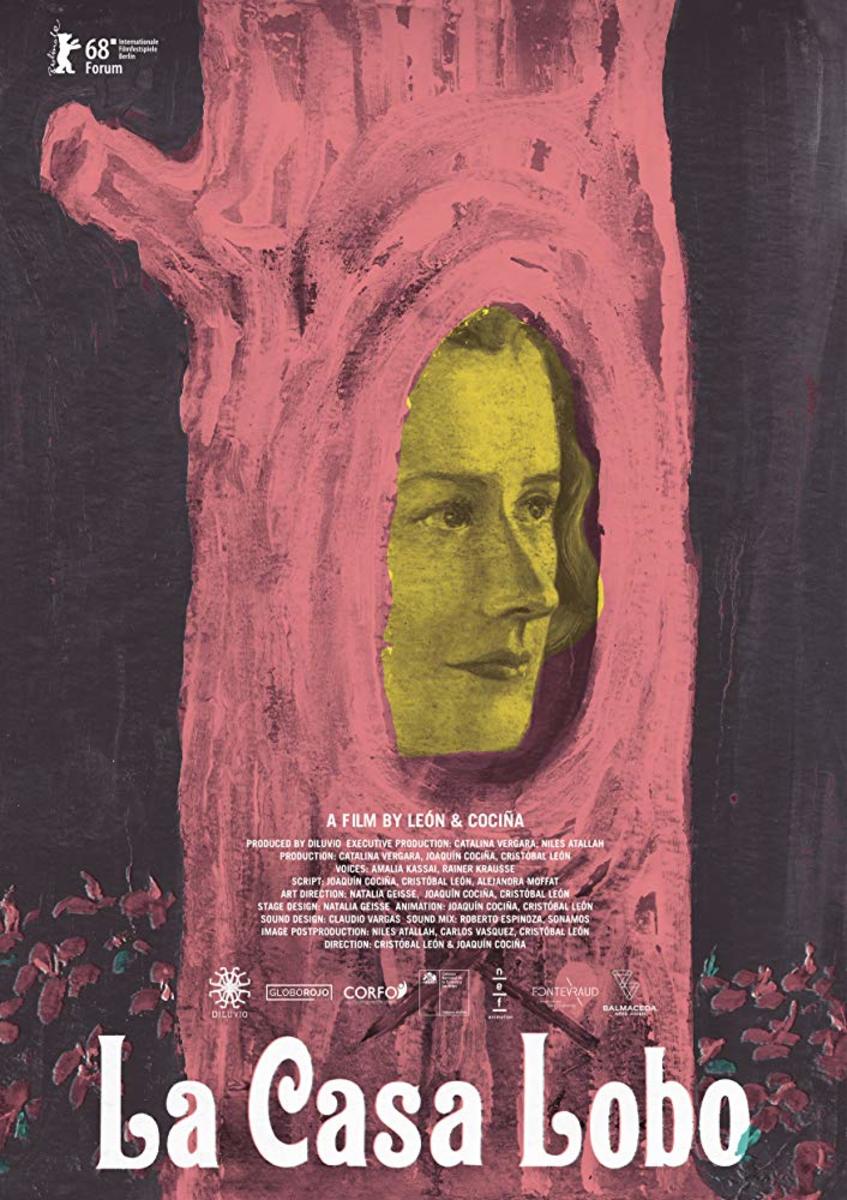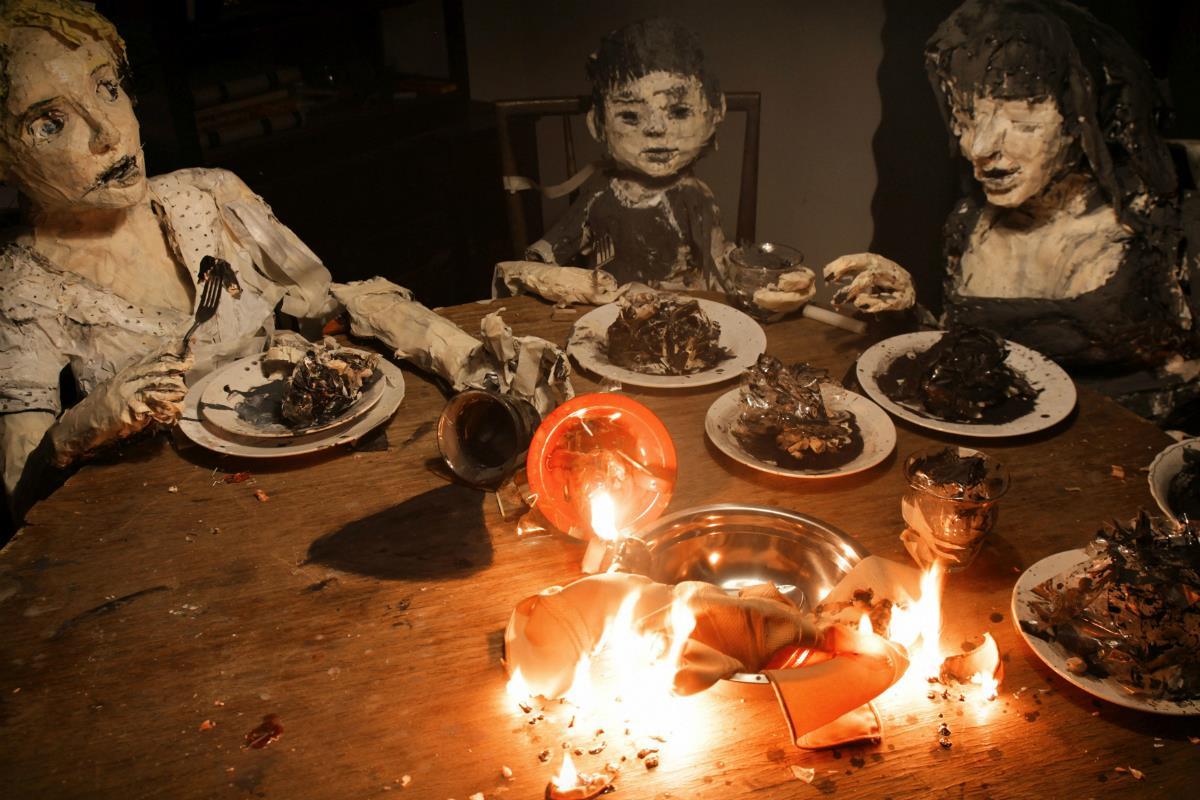| From http://image.tmdb.org/t/p/w500 /nIf2rWaWsS99TS1yt1crewHC1P7.jpg |
Director: Raul Ruiz
Screenplay: Gilbert Adair and Raul
Ruiz
Cast: Geoffrey Carey as Peter;
John Paul Getty III as Ron the guide; Jeffrey Kime as Jim; Camila
Mora-Scheihing as Annie; Rebecca Pauly as Barbara; Ethan Stone as Ron; Isabelle
Weingarten as Françoise; Shila Turna as Linda; José Nascimento as Joe
[Some Spoilers Throughout]
Synopsis: Going to the French woodlands for a walking expedition, a
group of American tourists find themselves lost. Time passes and, desperate,
they start to resort to cannibalism.
 The Territory, despite being set in France when a group of
Americans, two children (one male and one female) and a French woman are stuck
in the woods and can seemingly not escape, is a Portuguese co-production shot
in Portuguese woodland, an apt metaphor for Raul Ruiz's career especially when
you enter his feverish eighties era. That and all the strange little details
surrounding said film in production that feels like one of his films itself - Roger Corman having a brief and vague
financial involvement, John Paul Getty
III (infamously the member of the Getty family who was kidnapped as a young
boy) as a cast member, and Wim Wenders
"borrowing" (depending on who you ask) cast members for The State of Things (1982) mid
production of The Territory.
The Territory, despite being set in France when a group of
Americans, two children (one male and one female) and a French woman are stuck
in the woods and can seemingly not escape, is a Portuguese co-production shot
in Portuguese woodland, an apt metaphor for Raul Ruiz's career especially when
you enter his feverish eighties era. That and all the strange little details
surrounding said film in production that feels like one of his films itself - Roger Corman having a brief and vague
financial involvement, John Paul Getty
III (infamously the member of the Getty family who was kidnapped as a young
boy) as a cast member, and Wim Wenders
"borrowing" (depending on who you ask) cast members for The State of Things (1982) mid
production of The Territory.
It's from an era of puzzles, half
drawn concepts, music videos inexplicably turning into full sci-fi features and
a true labyrinth just in acquiring and seeing it all. Funnily enough, in lieu
of this context The Territory is
straight forward as a film by itself, if Luis
Buñuel hadn't realised only after making The Exterminating Angel (1962) he could've ended it with the guests
resorting to cannibalism to survive. Ruiz,
an entirely different island of cinema completely to Buñuel, stretches out this inevitable conclusion but has little
interest in bourgeois satire but as if a dark joke about the decline of
mankind's general manners in general, all in the midst of his take on a horror
movie.
| From http://rowereviews.weebly.com/uploads /1/2/3/2/12321416/2466945.jpg?540 |
In woodland that they cannot leave, the urbanites cannot escape their pettiness as much as they completely disregard their environment as they trample over the grassy undertow, Ruiz's inner cartographer seen as, if the most obvious of warnings, the woodland heritage site itself is in the shape of a human head. The further joke is that civilisation is constantly nearby despite them becoming lost for weeks and longer - the nearby road, the two older French men dining by a damn, the authorities finding the survivors with ease - as if their trapped vortex in said forest is a subconscious one. One where the only constant is a "Kilroy was here" marked on a tree's side, a case of pop culture referencing or Raul Ruiz being an unexpected fan of Styx.
Much can be made of the act of
cannibalism being deliberately staged as the Eucharist - flesh is literal flesh
- but unlike Darren Aronofsky
blundering into insulting metaphorical comparisons in mother! (2017) on said subject, the bigger satire on display in The Territory is once cannibalism is an
excepted means of nourishment, everyone left plays out a home of communal bliss
in the middle of nowhere with skulls decorating around the tents and a form of Stockholm
Syndrome where it's not seen as polite to not eat the meat. Only the influence
of the young boy and his French speaking mother, offer the last vestige of civilisation,
changes this in the end alongside a mystical idiot savant who appears later on,
repeating everything spoken to him and merely a background character for a long
period of time. Even once civilisation is found again, it leads to a more
cynical comment that one can get a celebrity interview or two from it, and the
saner person (still guilty of murder) returns back to those woods again out of
longing for it.
 |
| From https://bmtr.files.wordpress.com/2012/02/ruiz1.jpg?w=450&h=335 |
So, just from the descriptions, a hazy dream and this was the tone for Ruiz during his legendary eighties output, a period where he worked so much and became as prolific then alone to match Godard, Miike and Jess Franco for production, a specific decade of his career special in itself for Ruiz disciples even against the rest of his output. It's also unfortunately an underserved period where old VHS tape rips online are inevitable, a man famous for his stark use of bright coloured lighting and atmosphere even for his lowest budgeted sketches from the era not helped by the handicap of licensing or lack of access to getting proper restorations to these films. This era is seen as the most delirious of the Chilean director's entire career, the cultish of it all but, unfortunately, to match that aura you're stuck with an underserved filmography too.
However through a flicker of
muddy pixalisation and much welcomed fan subtitles, the most narratively straight-ahead
of his career still emphasises how idiosyncratic his style was. Unfortunately,
in VHS rip form, one of the biggest comparisons to Orson Welles' and his interest deep focus shot scenes is harder to gauge
in the oneiric fuzz, but in a film that plays out with cast mostly in the woods
it's nonetheless soaked in a detailed atmosphere. Arguably The Territory can be openly simplistic in its narrative
progression, the wait until the food supplies run out and someone gets an
infection on their leg leading to a conclusion a long one, but it still
succeeds because that endless woodland canopy and his heightened aesthetic is
meant to pill you into a stupor with a sickly sense of dread.
| From http://deeperintomovies.net/journal/image14/territory2.jpg |
Because of all these factors, The Territory is a perfect entry point into Raul Ruiz's career but paradoxically isn't, another appropriately Ruizian state close to asking whether a glass is both half empty and half full because arguably the more difficult and stranger films of this era like City of Pirates (1984) are closer to his trademark but takes a brave plunge into the deep end of the water or a prologue beforehand to consider watching such a production. So that also makes The Territory (a work never anything but his own work too) appropriately a beginner's viewing choice if not the entire spectrum of one of his eras, let alone any other.
Abstract Spectrum: Eerie/Grotesque/Weird
Abstract Rating (High/Medium/Low/None): None
Personal Opinion:
Calling The Territory unique is a little ridiculous when Raul Ruiz's entire filmography is that
unique over many productions, so instead the better choice of words is one of
his fascinating travels into what he called a "b movie", one with a
morbidness to the proceedings which takes it time to seep in but once it
appears keeps you engaged.
| From http://rowereviews.weebly.com /uploads/1/2/3/2/12321416/6234053.jpg?727 |




